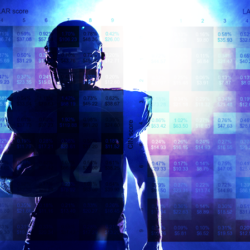
In this year’s Super Bowl we were all introduced to a new playoff overtime format that boils down to
- Both teams will have a chance to have the ball for at least one possession.
- If the teams are tied after each has had one possession, the game moves into a sudden death overtime.
The Coaches’ Differing Strategies
The 49ers won the coin toss and took the ball first. Coach Shanahan of the 49ers told the media after the Super Bowl “We wanted the ball third. If both teams matched and scored, we wanted to be the ones who had the chance to go win.”
The Chiefs, on the other hand, said they were okay with the 49ers’ decision to receive the ball first, as the Chiefs were planning on electing to get the ball second had they won the toss anyway.
The Value of the First Sudden Death Drive
Shanahan had focused on trying to maximize his chance of having the ball for the third drive (had the game reached that point), which would kick off sudden death, where the next team to score wins.
There is a lot of data on the outcome of sudden death OT games in the NFL because prior to 2012, all overtime games ended in sudden death OT. That resulted in the team with the first possession winning the game 64% of the time from 2004-20081.
From this data, we can see the 49ers would have held a clear advantage in the event the first two possessions went FG/FG.
Had the first drive not ended in a score, the 49ers would have functionally been the team kicking off a sudden death OT game and been significantly behind the Chiefs in likelihood of winning.
What about a Game that went TD/TD?
Once both teams have scored a TD on their first drive, the second team, in this case the Chiefs, will face a decision. Kick the extra point and go to sudden death, or go for two and win or lose the game on the next play.
We already established that by electing to kick the XP and going back on defense, the Chiefs would’ve been facing only a ~36% chance of winning the game. Meanwhile, when teams went for 2, as seen almost 1,000 attempts captured between 2000-20142, they picked up the 2-point conversion ~48% of the time. This of course doesn’t account for a Mahomes/Kelce tandem likely being better than a league average team at picking up 2-point conversions.
This leaves Andy Reid picking between a ~50% chance of winning if he goes for 2 and only a 36% chance if he kicks the ball back to the 49ers. It may sound like a difficult decision to decide the Super Bowl on a coinflip, but not when you realize the alternative is a 2/3rds chance of failure.

The Second Mover Advantage
Once the Chiefs had the ball, one advantage is they were incentivized to act more aggressively, especially in 4th down scenarios, because they knew how many points they needed to score to win or tie the game.
At their own 34 yard line, the Chiefs faced a 4th and 1. If they had gotten the ball first, this may have been a difficult decision on whether to punt the ball back to the 49ers or go for it on 4th down.
Already knowing they were down 3 and needed at least a field goal to win or tie the game, it became a no-brainer to run 4 plays, because punting back to the 49ers would mean immediately losing the game.
The result? Mahomes rushed for the first down.
Meanwhile, the 49ers had a 4th and 4 on the 9 yard line and elected to be conservative and kick a FG. If the 49ers kicked instead of receiving to start OT, and the Chiefs marched down the field and scored their TD first, the 49ers would have been in a position to try to match with a TD of their own.

Conclusion
Much of the media coverage has been heavily critical of Kyle Shanahan’s decision making due to a combination of the surprised reaction by the Chiefs to the 49ers decision, some 49ers admitting they didn’t know the OT rule, and Shanahan’s past missteps in the Super Bowl (having now blown three 10+ point leads, one of which we covered previously here), and of course, the actual result of the game: a loss for Shanahan and the 49ers.
Despite the coverage, there are clear advantages to both kicking first and receiving first. The team that kicks first is able to be more aggressive in their offensive drive, while the receiving team is more likely to end up with the ball first in a sudden death drive.
Balancing these different advantages is rather difficult, with ESPN analysis showing these advantages just about balance out with the receiving team winning 50.3% of the time and losing 49.7% of the time. This accomplishes the NFL’s goal of dramatically reducing the importance of the coin toss on the outcome of the game.
Now, given the known advantages and disadvantages have been shown to be roughly dead even, how should a coach go about making the decision? Two primary considerations boil down to a coach deciding to bet on their offense or defense:
- Do I want my offense or defense to be on the field for the more aggressive 2nd drive?
- Do I want my offense or defense on the field for a game-deciding 2-point conversion in the event the first two drives both result in a touchdown?
One other knock-on effect of the new rules is it will push more games to be decided by a 2 point conversion if both teams score a TD. Time for the Eagles to start practicing that 2-yard tush push. This is a Philly firm, after all.




Subscribe Now
Get each new post sent straight to your inbox